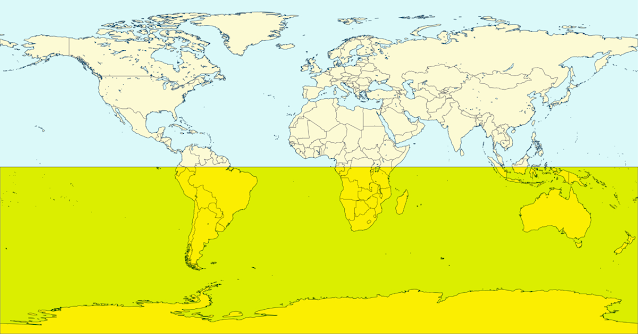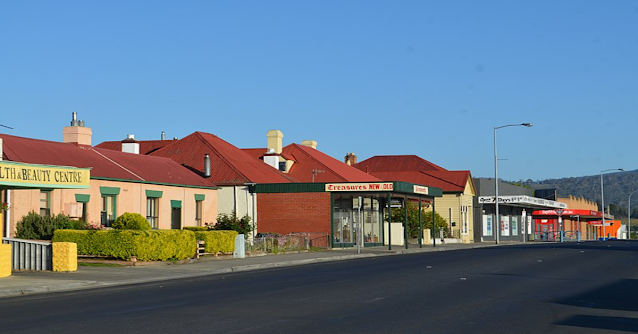The Dutch Legacy of Tasmania: A Window into History
In the Age of Discovery or the Age of Exploration, one name shines brightly as a symbol of discovery: Abel Janszoon Tasman. Born in the Dutch Republic during the early 17th century, Tasman left an indelible impression in history by becoming the first European explorer to set foot on the uncultivated seashores of Van Diemen's Land , now known as Tasmania.
The year was 1642, and as Tasman's ships crossed unexplored waters, they forever changed the course of history, leading in a new chapter in the European understanding of the Southern Hemisphere. The Southern Hemisphere encompasses the portion of the Earth situated below the equator. This marked a significant milestone in the exploration and mapping of the world, shaping our understanding of the Earth's vastness and diversity.
The exploration of Tasmania holds historical and geopolitical significance as it reflects the broader context of European colonial expansion and competition during the Age of Discovery. This article delves into the remarkable legacy left by the Dutch explorer's expedition, exploring the profound Dutch connection to Tasmania and unraveling the historical journey that unfolded as a result.
💻Table of Contents:
- Abel Tasman's Expeditions and the Influence of the Dutch East India Company
- Dutch Setbacks and British Dominance: The Shift in Power in Australia
- Encounters with Indigenous People
- Continuation of the Expedition
- Legacy of Tasman's Exploration
- The Naming of Tasmania and European Settlement: From Van Diemen's Land to Tasmania
 |
| Abel Tasman |
Abel Tasman's Expeditions and the Influence of the Dutch East India Company:
Abel Tasman, the Dutch explorer, had a significant association with the Dutch East India Company (Vereenigde Oost-Indische Compagnie or VOC). The VOC was a renowned trading company established in the 17th century, primarily focused on trade in the East Indies (present-day Indonesia) and other parts of Asia. The company held a monopoly on Dutch trade in the region and played a crucial role in expanding Dutch economic and colonial interests.
Abel Tasman was appointed by the VOC to undertake several voyages of exploration in search of new trade routes and territories. On November 24, 1642, he embarked on his most famous expedition, during which he discovered Van Diemen's Land (now Tasmania) and subsequently explored the western coast of New Zealand. Tasman's voyages were instrumental in advancing the VOC's knowledge of the Southern Hemisphere and contributing to its commercial ambitions.
The VOC provided Tasman with financial support, ships, and resources for his expeditions. The company's main objective was to find new trading opportunities, establish colonies, and expand its influence in the regions it operated. Tasman's discoveries and mapping efforts contributed to the VOC's understanding of the territories it sought to trade with or potentially colonize.
 |
| Southern Hemisphere |
Throughout his career, Abel Tasman maintained a close relationship with the VOC, conducting multiple voyages on their behalf. His explorations and the information he gathered greatly benefited the commercial interests of the Dutch East India Company, furthering their understanding of the Southern Hemisphere and its potential for trade and colonization.
Dutch Setbacks and British Dominance: The Shift in Power in Australia
Early Dutch explorations in Australia laid the foundation for European knowledge of the continent. The absence of permanent Dutch settlements created an opportunity for British expansion in Australia. Despite their early explorations, the Dutch did not establish permanent settlements on the Australian continent. This left an opportunity for the British to assert their presence in the region. In the late 18th century, British explorer James Cook arrived in Australia, claiming the eastern coastline for Britain and subsequently leading to the establishment of the First British Colony in Australia (New South Wales) in 1788.
The conflict between the Dutch and the British in relation to Australia primarily revolved around competing territorial claims and control over trading routes. The British sought to establish their dominance in the region, which led to tensions between the two European powers.
 |
| Aboriginal Tasmanians |
Over time, the British gradually expanded their colonial presence in Australia, establishing additional colonies across the continent. The Dutch, focusing more on their existing territories in the East Indies, gradually withdrew from their exploration and colonization efforts in Australia.
While there were occasional encounters between Dutch and British ships in Australian waters, including instances of conflict and battles, the overall conflict between the Dutch and the British in relation to Australia was relatively limited compared to their broader global conflicts.
Encounters with Indigenous People:
Tasman's arrival in Van Diemen's Land was not without difficulties, particularly in navigating the interactions with the indigenous Tasmanians. They struggled to understand each other due to differences in language and culture. Tasman's interaction with the locals was short and driven by curiosity rather than meaningful communication. The language barrier and significant cultural divide between the Europeans and the Aboriginal Tasmanians made it challenging to establish deeper connections at that time.
Continuation of the Expedition:
Following the discovery of Van Diemen's Land, Tasman's expedition ventured further east, meticulously mapping the coastline of the newly found territory. Their exploration extended to New Zealand, marking the first European voyage to sight and chart substantial portions of both islands. Tasman's exceptional cartography skills played a vital role in expanding the European understanding of the Southern Hemisphere, significantly contributing to the growing body of knowledge about these lands.
 |
| Tasmania |
Legacy of Tasman's Exploration:
Abel Tasman's expedition, while not directly leading to immediate European settlement, established a crucial groundwork for future interactions and discoveries in the Southern Hemisphere. Through his careful mapping and detailed records, Tasman provided invaluable insights into the geography of previously unexplored regions. His charts became a guiding reference for subsequent European navigators and explorers, who relied upon his work when venturing into these uncharted waters. The enduring legacy of Tasman's exploration shaped the course of further exploration and contributed to a deeper understanding of these unknown territories.
The Naming of Tasmania and European Settlement: From Van Diemen's Land to Tasmania
In 1642, explorer Abel Tasman discovered a new land, which he named Anthony van Diemen's Land in honor of his sponsor, Governor Anthony van Diemen of the Dutch East Indies. However, over time, the name 'Tasmania' gained popularity as an alternative to Van Diemen's Land. In the 1800s, 'Tasmania' started appearing on maps and in publications, while the locals referred to it as 'Trowunna' or 'Trowenna.'
It was not until the 19th century that European settlers established a presence in Van Diemen's Land. In 1855, a parliamentary petition successfully persuaded Queen Victoria to rename the island. Consequently, in 1856, Van Diemen's Land was officially transformed into Tasmania. This renaming marked a significant departure from its convict past and symbolized the embrace of a new identity, which continues to be celebrated to this day. Today, Tasmania stands as a testament to the endurance of its indigenous cultures and the resilience of its unique environment.
 |
| New Norfolk Tasmania |
Conclusion:
Abel Tasman's 1642 discovery of Van Diemen's Land marked a significant turning point in the era of exploration. Driven by a thirst for adventure and a quest for knowledge, Tasman's expedition opened new horizons for European engagement with the Southern Hemisphere. While the immediate impact of his journey may have been limited, the enduring legacy of Tasman's exploration left an indelible mark on history, enriching our collective understanding of the world. The discovery of Van Diemen's Land not only represented a pivotal geographic milestone but also served as a testament to the unwavering spirit of exploration that defined the remarkable Age of Discovery.





